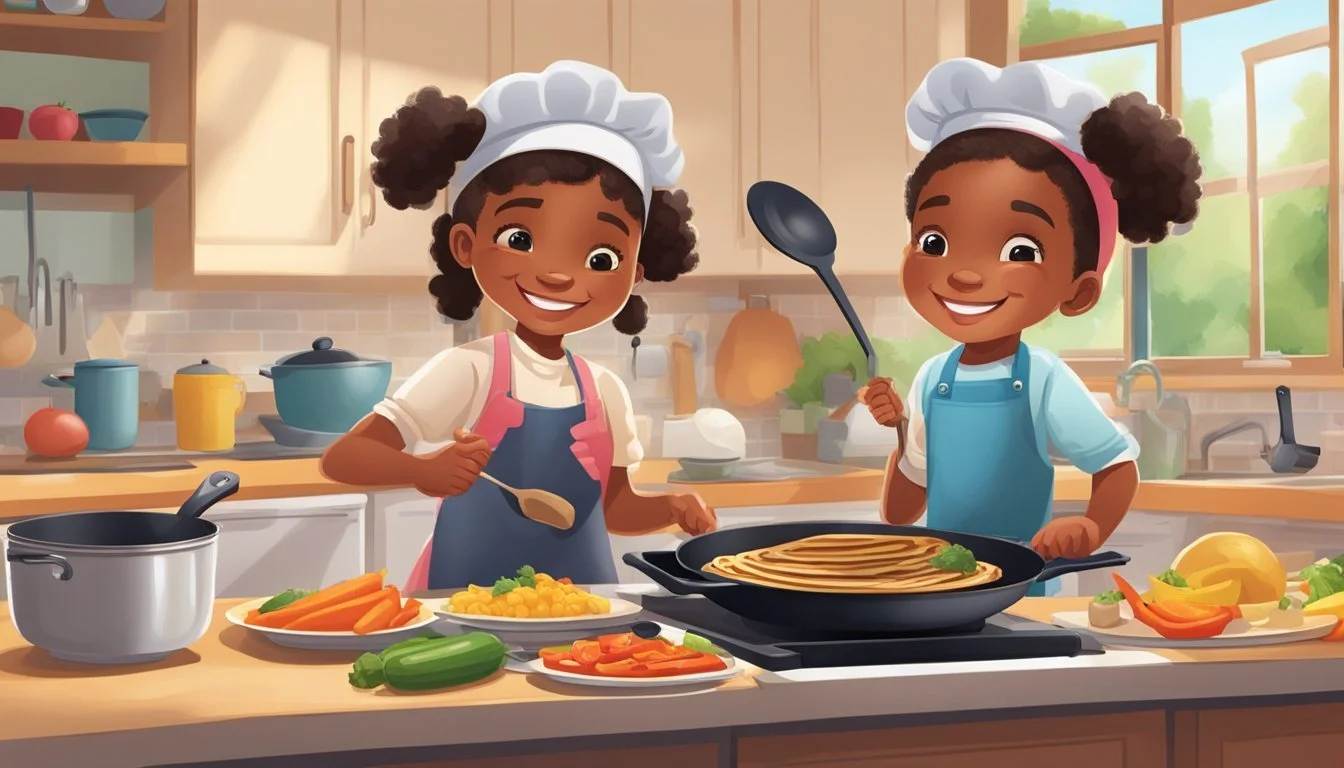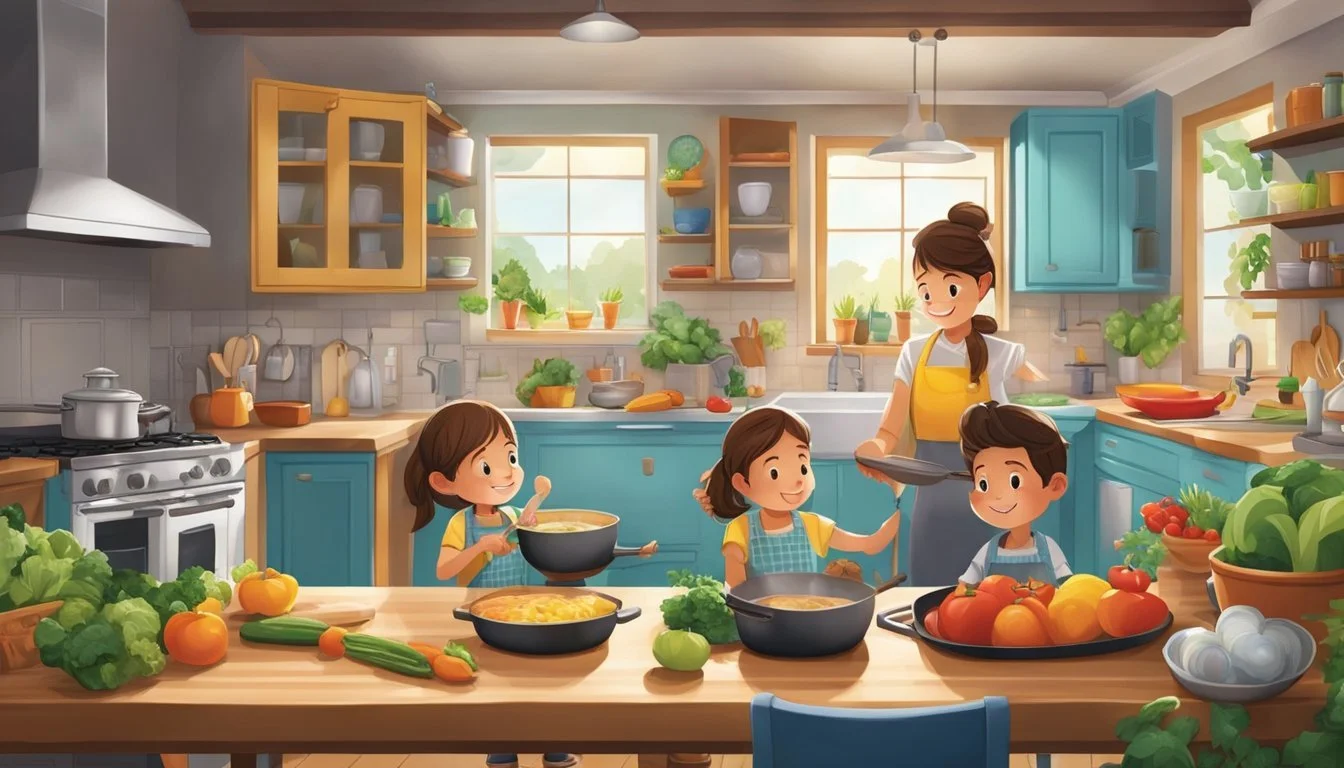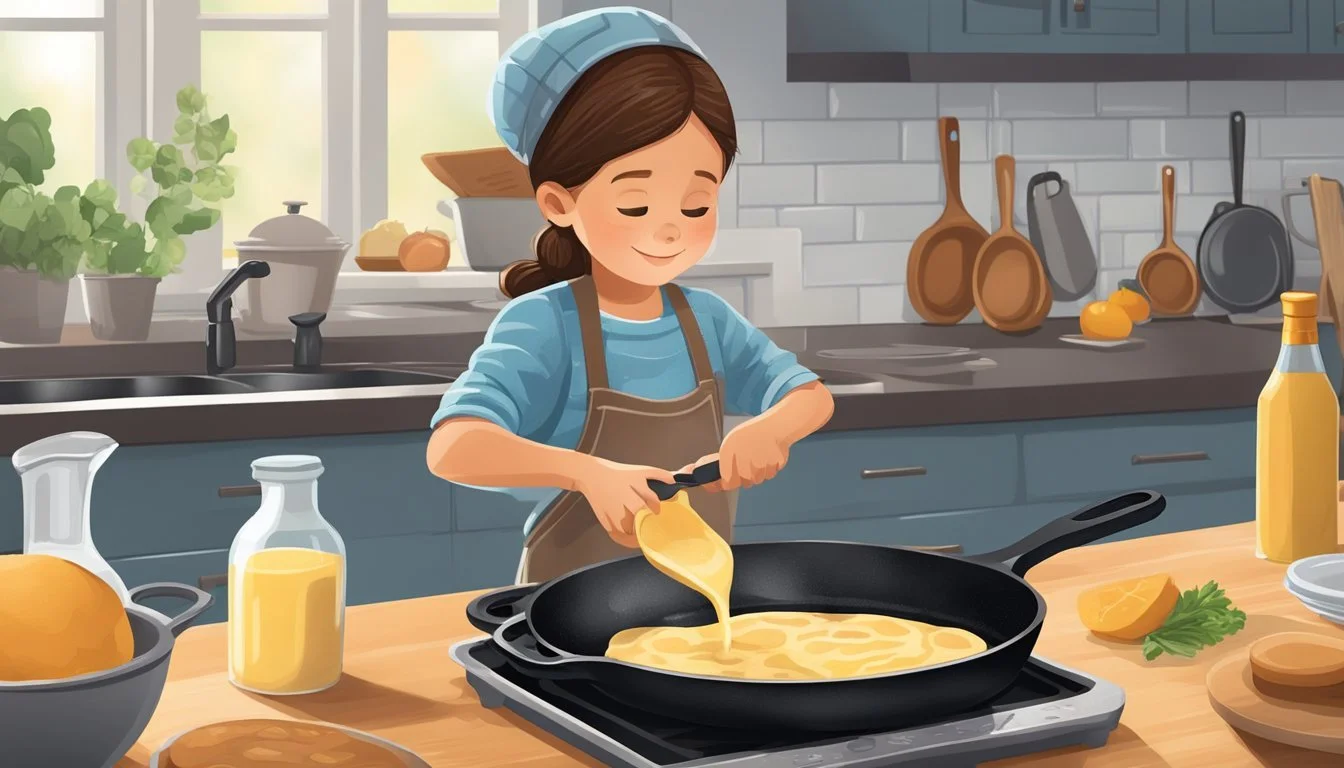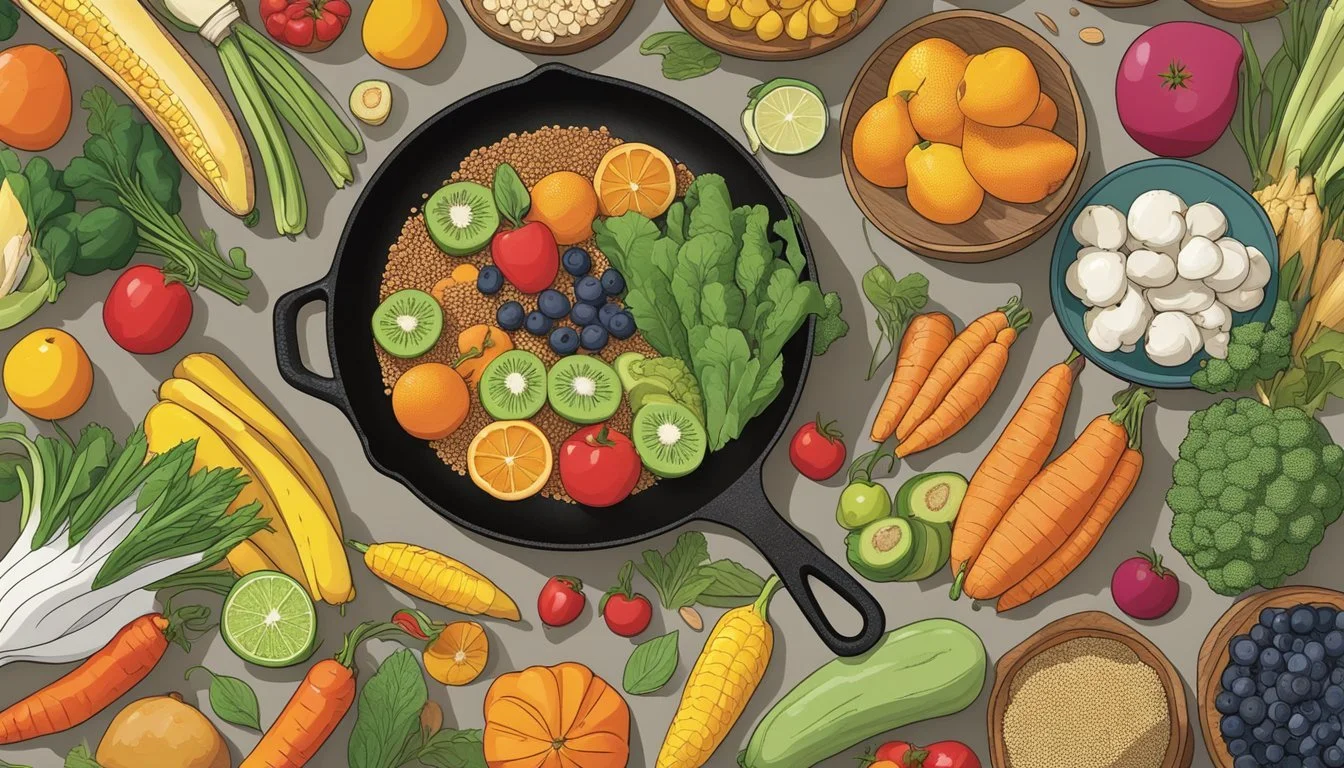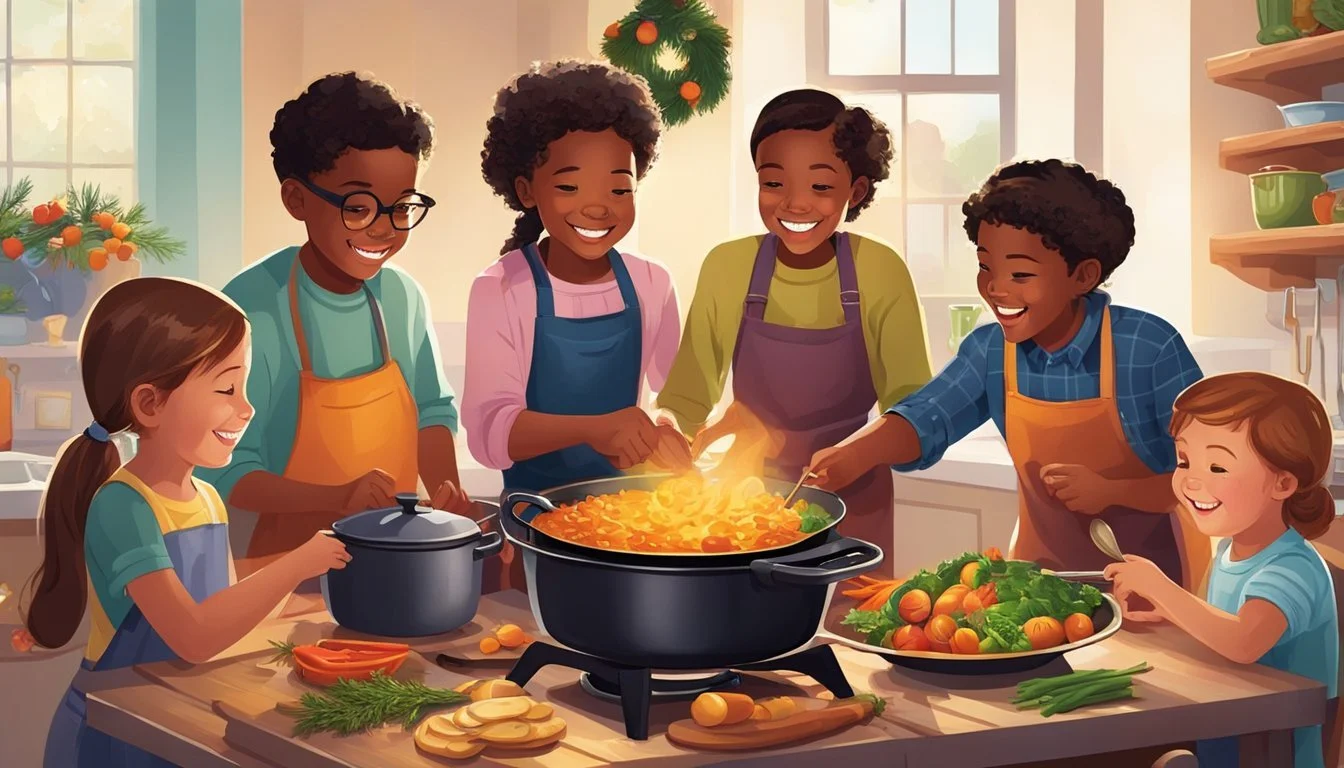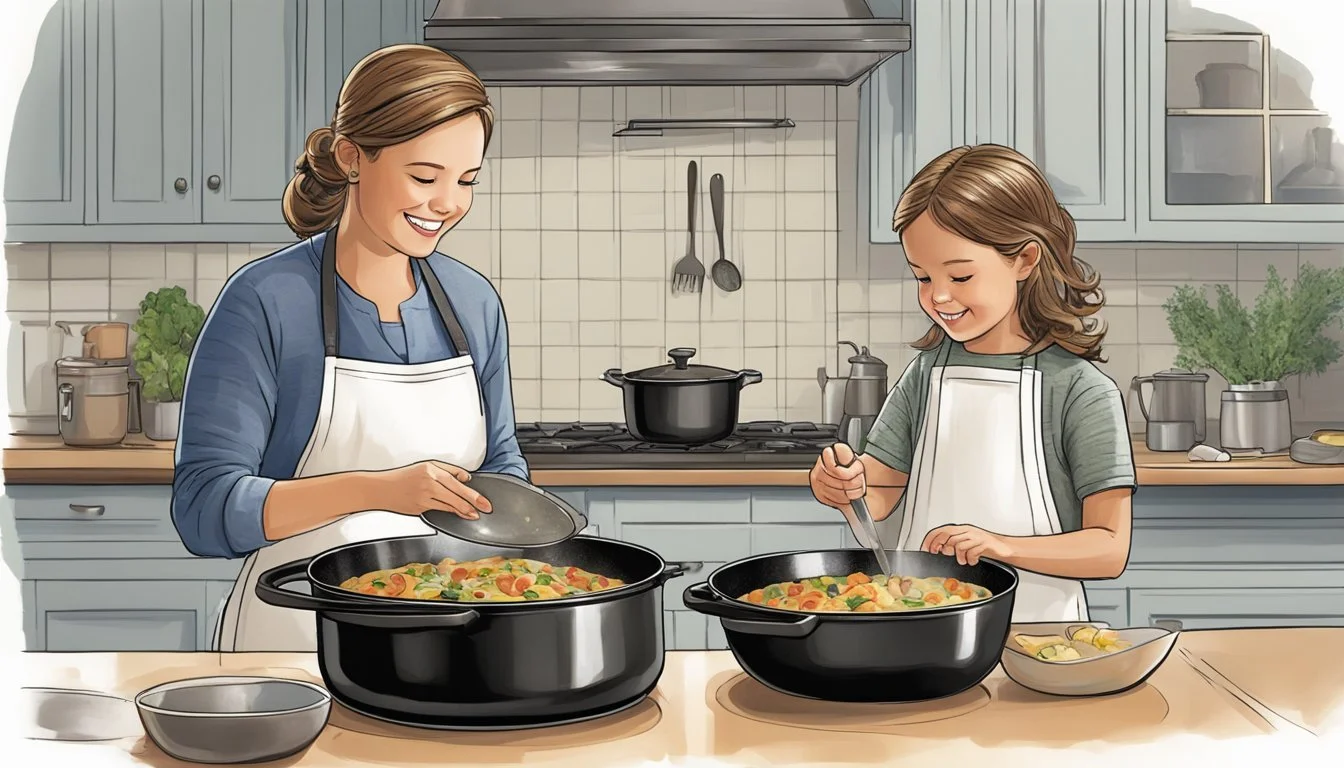Cast Iron Cooking for Kids
Easy and Secure Recipe Guide
Cast iron cooking is a time-honored tradition that brings a touch of rustic charm to the modern kitchen. When it comes to preparing meals for the family, especially with kids in mind, cast iron pans offer durability and versatility. These sturdy kitchen tools are capable of cooking a wide variety of dishes, from savory breakfasts to sweet desserts. The even heat distribution and heat retention properties of cast iron make it an ideal choice for recipes that kids love, ensuring evenly cooked meals (how long do cooked meals last?) every time.
Introducing children to the kitchen can be a wonderful opportunity to teach them valuable skills and instill a love for cooking. Kid-friendly cast iron recipes not only provide a way to engage children in the cooking process but also ensure that the food is nutritious and delicious. With proper supervision, children can learn to handle and cook with cast iron skillets and Dutch ovens safely. This hands-on experience allows them to explore different ingredients and techniques, all while creating memories and meals that the whole family can enjoy together.
Creating a cast iron cooking guide for families can provide the necessary steps to ensure safety and fun in the kitchen. Such a guide would outline the basics of handling cast iron cookware, from seasoning the pan to cooking and cleaning, tailored to be understandable for both parents and children. With an array of simple and enjoyable recipes, families can discover the versatility of cast iron and make it a staple of their culinary routine. Whether baking fluffy pancake sticks or whipping up a hearty breakfast skillet, cast iron ensures that these shared experiences are not only safe but also deeply rewarding.
Introducing children to the wonders of cast iron cooking can be a delightful and educational experience. From the excitement of restoring rusty cast iron to the joy of crafting delicious cast iron skillet pies, kids can explore a world of culinary creativity while learning valuable skills in the kitchen.
Teaching children the art of cast iron BBQ techniques and the preparation of heartwarming cast iron winter recipes can foster a love for cooking and a deeper appreciation for diverse cuisines. The durability and versatility of cast iron kitchen tools make them ideal for introducing kids to the fundamentals of cooking, while the surfaces of these cookware pieces provide an excellent medium for culinary exploration.
Encouraging children to experiment with cast iron international cuisine can broaden their palates and cultivate an understanding and appreciation of global flavors. Additionally, involving kids in the process of restoring rusty cast iron can instill a sense of responsibility and care for valuable kitchen tools.
By engaging children in the art of cast iron cooking, parents can create lasting memories and impart essential life skills, all while nurturing a love for culinary adventures.
Why Cast Iron for Kids?
Introducing children to cooking with cast iron cookware offers valuable lessons in kitchen craft and safety. Kids can help prepare simple recipes using this time-tested material, benefiting from its even heat distribution and durability.
Benefits of Cast Iron Cooking
Durability: Cast iron cookware stands the test of time. It can last for generations, making it an economical choice for family kitchens. Parents can rest assured that the sturdy material of a cast iron skillet won't wear out quickly with use by enthusiastic young chefs.
Even Heating: A key advantage of using a cast iron skillet is its ability to distribute heat evenly across the cooking surface. This helps in achieving uniformly cooked dishes, which is especially encouraging for kids learning to cook.
Nutritional Bonus: Cooking in cast iron may impart a small amount of iron into the food. Though the amount is typically minimal, it can be seen as an added nutritional benefit.
Versatility: Cast iron is versatile and can be used for a variety of recipes that appeal to children, from pancakes to pizza, making cooking sessions with cast iron a culinary adventure.
Teaching Kitchen Safety
Heat Retention: Since cast iron retains heat well, it's crucial to teach children that the handle can remain hot long after cooking. Always supervise and use oven mitts or pot holders.
Proper Handling: Cast iron is heavy. Instructing kids on how to handle and carry the skillet safely can prevent accidents. Emphasize the importance of lifting with both hands and placing it down gently.
Cleaning and Maintenance: Post-cooking, kids can learn the proper care for cast iron, such as cleaning with hot water and avoiding soap to maintain the seasoning. They can also help in drying the pan thoroughly to prevent rust.
In conclusion, with proper guidance, cooking with cast iron can be a safe and educational experience for children, imparting skills and memories they can cherish and utilize throughout their lives.
Getting Started With Cast Iron
Introducing children to cast iron cooking is an excellent way to teach them about heat retention and the versatility of this timeless kitchen tool. Cast iron skillets can move from stovetop to oven with ease, making them ideal for a range of recipes.
Choosing Your First Cast Iron Skillet
When selecting a cast iron skillet, size and weight are important factors. A 10-inch skillet is manageable for most young cooks and provides ample space for teaching basic techniques like searing. Consider a skillet with a helper handle to assist in lifting when it's full or hot. Brands like Lodge are reputable for their durability and affordability, offering a good starting point for culinary exploration with cast iron.
Essential Cast Iron Tools for Kids
To safely use cast iron with children, consider the following tools:
Hot Handle Mitts: They protect hands from high heat when moving the skillet.
Wooden Spatula: It prevents scratches while cooking and stirring.
Silicone Basting Brush: Ideal for applying oil for seasoning and upkeep.
These tools help maintain safety in the kitchen and ensure kids have a positive experience when cooking with cast iron.
Basic Cast Iron Care and Maintenance
A well-maintained cast iron skillet can last generations. Here are key care steps:
Clean after each use: Rinse with hot water and use a non-abrasive sponge to remove food bits.
Dry thoroughly: Prevent rust by drying the skillet immediately after washing. One can dry it on the stovetop over low heat.
Season regularly: Apply a thin layer of neutral oil (like canola) and bake it in the oven for an hour at 375°F to maintain the non-stick surface.
Following these care guidelines ensures the cast iron skillet remains a reliable tool in the kitchen, providing many opportunities for young chefs to hone their cooking skills.
Simple and Fun Recipes
Introducing children to cooking can be a delightful adventure, especially when utilizing a cast iron skillet. These recipes are not only enjoyable to prepare but also embrace the versatility of cast iron cookware, ensuring a fun and safe cooking experience.
Breakfast Delights
For a hearty start to the day, Pancake Sausage Sticks are a crowd-pleaser. Children enjoy wrapping sausage links in fluffy pancake batter, a task that's simple and engrossing. The baking process is straightforward: combine your favorite pancake mix with milk and eggs, dip the sausages, and bake in a preheated oven using a cast iron pan.
Cast Iron Scrambled Eggs: Beat eggs, pour them into a pre-heated and greased skillet, and stir gently. Season with salt and pepper, and add cheese during the last minute for a deliciously cheesy finish.
Lunchtime Favorites
Homey Mac & Cheese with a crispy top layer is perfect for lunch. Begin with a roux of butter and flour, slowly add milk until thickened, and then mix in generous amounts of cheese for a creamy sauce. Combine with cooked pasta, top with more cheese, and bake until bubbly.
Potato Pan Rolls: Mix mashed potatoes with bread dough ingredients, roll into balls, and arrange in a cast iron pan. Bake until they are golden brown and serve with butter for a comforting lunch side.
Dinner and Main Courses
Preparing a Whole Beef Tenderloin (What wine goes well with beef tenderloin?) in a skillet creates a luxurious dinner. Tie the tenderloin with twine, sear in butter and olive oil, and transfer the skillet to the oven to finish cooking to the desired doneness.
A Cast Iron Skillet Pizza is another dinner option. Children can help by spreading the dough in the skillet, adding a simple tomato sauce, and sprinkling with cheese and their favorite toppings before baking.
Sweet Treats and Desserts
For dessert, try making a Chocolate Pecan Skillet Cookie. Incorporate chocolate chips and pecans into cookie dough, press into the skillet, and bake until set. A scoop of vanilla ice cream on top is the quintessential finishing touch.
Rhubarb Crisp becomes a tangy treat when baked in a cast iron skillet. Mix chopped rhubarb with sugar and flour, top with a crumbly oat mixture, and bake. It's simple and captures the essence of home-style cooking.
Healthy and Nutritious Options
When cooking with cast iron, a range of wholesome dishes can be created that are not only appealing to kids but also packed with nutrients. Here's how one can focus on vegetables, lean proteins, and consider dietary restrictions while making the most of the cast iron skillet.
Vegetable-Forward Skillet Meals
One can start with a Spicy Veggie Pasta Bake that incorporates whole wheat pasta, spinach, and green peppers. The high iron content of the cast iron skillet can help in increasing the iron content of the food, especially when cooking vegetables like spinach. Cast iron also provides an even heat that is perfect for roasting vegetables to bring out their natural sweetness and flavor.
Beef and Spinach Skillet: A skillet meal that combines iron-rich spinach and lean ground beef can be both nutritious and delicious for children.
Vegetable Medley: Cook sliced green peppers and other veggies in olive oil, and season with herbs like basil for a fragrant, colorful side dish.
Lean Proteins and Skillet Cooking
Using lean proteins like turkey (What wine goes well with turkey?), chicken, or fish in a cast iron skillet creates meals that are rich in protein but lower in unhealthy fats.
Basil-Butter Steaks with Roasted Potatoes: Cook lean cuts of steak with a dollop of basil butter to keep the dish flavorful while ensuring a good protein intake.
Lean proteins cook exceptionally well in cast iron skillets as they retain heat and provide a consistent cooking temperature, ensuring proteins are well-cooked yet remain tender and juicy.
Cast Iron Cooking for Dietary Restrictions
For families with dietary restrictions, cast iron skillets are adaptable to various needs, including gluten-free, nut-free, and vegan diets.
Beans as a Protein Substitute: When meat is off the menu, beans can serve as a sufficient protein substitute. A skillet chilli with mixed beans can be a filling and nutritious meal that caters to such dietary preferences.
Using a cast iron skillet to cook gluten-free or vegan options, like a bean-studded skillet cornbread, can provide satisfying alternatives without compromising on quality or taste.
Creative Cooking Techniques
Exploring creative cooking techniques with cast iron can transform how children approach meal preparation, infusing fun into the learning process. Cast iron's versatility allows for a variety of cooking methods that can elicit exciting flavors and textures, particularly when baking, utilizing stovetop to oven methods, and cooking outdoors.
Skillet Baking
Children can experience the joy of baking with a cast iron skillet, which evenly distributes heat and can go straight into the oven. Skillet Pancake Sticks are a playful twist on traditional pancakes and can be made by pouring batter around sausage links in a preheated cast iron pan. Another engaging recipe is the One-Skillet Pork Chop Supper, which harmoniously combines a savory sear on the pork with the comfort of baked vegetables, all within the borders of the skillet.
Stovetop to Oven Methods
The stovetop-to-oven method is ideal for teaching young chefs about building flavors. Start with searing on the stove to develop a crust and then transfer the cast iron to the oven to finish cooking. Cast iron excels in recipes like Pinwheel Steak Potpie, where steak is initially browned on the stove, then baked encased in pastry. It's an alluring way to demonstrate how a single pan can be used to create a multi-step dish.
Outdoor Cooking with Cast Iron
Encouraging cooking in the great outdoors can instill a sense of adventure in children. Cast iron's durability makes it perfect for campfire cooking. A simple recipe is the Sage-Rubbed Salmon, where young chefs can learn to gently sear the salmon in the skillet over an open fire, locking in flavors with the herb rub, and then letting the heat of the coals gently finish the cooking process. This method not only infuses the salmon with a smoky aroma but also imparts the importance of temperature control in cooking.
Seasonal and Holiday Specials
In this section, families will discover the joy of cooking with cast iron during the holidays, making it a perfect time to introduce kids to fun and festive recipes.
Celebratory Skillet Feasts
Thanksgiving: Turkey Biscuit Stew
For a comforting Thanksgiving dish, one can prepare a turkey biscuit stew directly in the cast iron skillet. It begins with a savory base of tender turkey chunks and hearty vegetables. The dish becomes a festive feast by topping it with fluffy, buttery biscuits.
Christmas: Pork Chop Supper
At Christmas, a pork chop supper made in a cast iron skillet can capture the magic of the season. Marinate the pork chops (What wine goes well with pork chops?) in a mixture of holiday spices and aromatics, then sear them in the skillet. Serve with a side of roasted root vegetables for a complete holiday meal.
Holiday Themed Cast Iron Recipes
Halloween: Cinnamon-Sugar Apple Pie
A classic, cast iron cinnamon-sugar apple pie can create warm memories during Halloween. Kids can help layer thinly sliced apples, sprinkle a generous amount of cinnamon-sugar, and cover with a lattice crust before it's baked to perfection in the skillet.
New Year: Honey Walleye
For a New Year's celebration, honey walleye offers a sweet beginning to the new year. Season the walleye fillets with lemon zest and a touch of honey before pan-frying in the skillet until they develop a beautiful, golden crust.
Table of Ingredients for the Recipes Mentioned:
Recipe Key Ingredients Turkey Biscuit Stew Turkey, vegetables, biscuits Pork Chop Supper Pork chops, holiday spices, veggies Cinnamon-Sugar Apple Pie Apples, cinnamon, sugar, pie crust Honey Walleye Walleye fillets, lemon zest, honey
By focusing on these holiday specials, families can create lasting traditions and delicious memories with cast iron cooking.
Advanced Cast Iron Techniques
In this section, users will elevate their cast iron cooking through techniques such as achieving the perfect sear and effectively managing kitchen time. Through strategic steps, one can ensure optimal results with their cast iron cookware.
Mastering the Perfect Sear
The perfect sear in a cast iron skillet is achieved by heating the skillet to a high temperature before adding the food. This method results in a crisp, caramelized exterior that seals in moisture. Here are specific steps for creating an exceptional sear:
Preheat the Skillet: Place the empty cast iron skillet over medium-high heat for 5 minutes.
Oil the Skillet: Lightly coat the skillet with a high smoke point oil like canola or vegetable oil using a paper towel.
Food Preparation: Pat the food dry, as moisture is the enemy of a good sear.
Place the Food: Lay the food in the skillet using tongs, and avoid overcrowding to ensure even cooking.
Avoid Moving Food: Let the food cook undisturbed for a few minutes until a crust forms.
Efficient Kitchen Time Management
Streamlining tasks in the kitchen can save time and reduce stress. For cast iron cooking, the strategy involves parallel tasking and proper pre-cooking setup. Achieving efficiency includes:
Heating Multiple Pans: If using more than one piece of cast iron cookware, heat them simultaneously to use the time effectively.
Mise en Place: Prepare and measure all ingredients before beginning to save time during the cooking process.
Clean-up Process: Clean the cast iron after use while it is still warm, and maintain its seasoning to reduce future prep time.
Fun with Cast Iron Beyond the Kitchen
Cast iron skillets are not confined to kitchen use; they can be the centerpiece for family fun and learning. They offer an interactive way to engage children with practical skills and creative expression.
Cast Iron Crafts and Projects
Cast iron skillets provide a robust medium for heat-based crafts and projects. Families can take their cast iron beyond the culinary realm by using the pans to assist in wax crayon melting projects, where children can create colorful wax art on paper. Another fun project involves making cast iron skillet sunprints. To create a sunprint, children can place different shaped leaves or objects in the skillet, set it in the sun, and see the silhouette forms.
Wax Crayon Melting:
Materials: Cast iron skillet, crayon pieces, paper.
Instructions: Heat the skillet over a campfire or low kitchen stove, place crayon pieces, and let them melt. Pour the wax onto paper to make art.
Cast Iron Sunprints:
Materials: Cast iron skillet, leaves or other objects, sunlight.
Instructions: Arrange objects in the skillet, expose to sunlight, and observe the shapes created.
Interactive Cast Iron Cooking Games
Interactive cooking games can turn a cast iron skillet into a tool for play and learning. Families can gather around the campfire or kitchen to engage in friendly cooking competitions using cast iron skillet recipes. For instance, a "Skillet Flip Challenge" can see who in the family can flip pancakes or vegetables the best. "Guess the Herb" is a sensory game where participants use smell and taste to identify herbs cooked on cast iron.
Skillet Flip Challenge:
Objective: Perfect the art of flipping food items in a cast iron skillet.
How to Play: Each participant tries flipping pancakes, scoring points for the best technique and presentation.
Guess the Herb:
Objective: Identify herbs by scent and taste when cooked in a cast iron pan.
How to Play: Cook different herbs in the skillet, and have participants guess the herb based only on its cooked aroma and flavor.
Resources and Continuing Education
To master the art of cast iron cooking, parents and children alike can benefit from a variety of educational resources and hands-on experiences. These resources can complement the practical knowledge gained from actual cooking and further enhance the skills needed for cast iron mastery.
Books and Online Resources
Books:
The Lodge Cast Iron Cookbook serves as an excellent guide for those starting out, offering step-by-step recipes and care instructions. For families interested in baking, The Best Cast-Iron Baking Book shares insights into how cast iron can enhance the flavor of baked goods.
Online Resources:
Websites such as Serious Eats provide an assortment of cast iron skillet recipes suitable for families, including one-dish meals ideal for busy weeknights. Additionally, the Academy of Nutrition and Dietetics website, eatright.org, offers nutrition information that can be paired with healthy cast iron cooking recipes.
Cooking Classes and Workshops
Local Workshops:
Cooking classes such as those offered by The Cutting Edge Classroom, invite families to learn the ins and outs of cast iron cooking. These workshops are designed to be interactive and hands-on, allowing personalized instruction in cast iron care and cooking techniques.
Community Classes:
Community centers and local culinary schools often host family-friendly cooking workshops where cast iron cooking is a featured topic. These classes are especially beneficial for practical learning and immediate feedback from experienced chefs.

